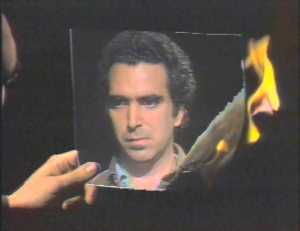Peter Campus
Peter Campus
Nascido: 1937
Biografia:
peter campus is an American artist and a pioneer of new media and video art, known for his interactive video installations, single-channel video works, and photography. His work is held in the collections of numerous public institutions, including The Museum of Modern Art, Whitney Museum of American Art, Solomon R. Guggenheim Museum, Hamburger Bahnhof - Museum für Gegenwart, Tate Modern, Museo Reina Sofía, Albright-Knox Art Gallery, Walker Art Center, and the Centre Georges Pompidou. The artist works on the south shore of Long Island where he resides with his wife, artist Kathleen Graves.
Born and raised in New York, campus has an eastern European Jewish family background. His father was a doctor of Romanian descent, born in the U.S. to immigrant parents; his mother was Ukrainian. campus' mother died when he was aged seven, an event that colored the artist's youth and family life. Inspired by several family members who worked in the art world, he developed an early interest in photography, which his father taught him, and painting. campus cites watching Michael Powell movies as a teenager as an influential experience. He studied experimental psychology with a focus on the development of the senses and cognitive studies at Ohio State University, earning his degree in 1960.
After military service, campus studied film editing at City College Film Institute and worked in the film industry as a production manager and editor, making documentaries until the early 1970s. During this period he developed an interest in Minimal Art, becoming friends with the sculptor Robert Grosvenor. He worked with Otto Piene and Aldo Tambellini at the Black Gate Theatre in East Village, New York. Charles Ross became a mentor and campus worked as co-editor on Ross’ Sunlight Dispersion. Robert Smithson, Nancy Holt, Bruce Nauman, Yvonne Rainer and Joan Jonas were influential figures in his decision to begin making his own art. In 1970, aged 33, campus purchased his first video equipment.
campus achieved rapid acclaim in the 1970s for a series of video works that explored issues of identity construction, perception, and subversion of the relationship between the viewer and the work. He had his first solo show in 1972 at Bykert Gallery in New York, and his first solo museum exhibition at the Everson Museum of Art in 1974. In this early period, his works consisted of single-channel videos and interactive closed-circuit television installations. campus’ first video, Dynamic Field Series (1971), features a camera suspended above the artist, which he moved up and down using a rope pulley as he lay on the floor below. In Double Vision (1971), campus used two cameras and superimposition, beginning a more formal experimentation with the medium itself--a characteristic that recurs in his work to this day.
Other 1970s video work includes the influential Three Transitions (1973), in which the artist transforms his recorded image in three different sequences, using superimposition and chroma-keying technology. In Third Tape (1976), campus manipulates a virtual self-image into an abstract self-portrait by filming the performer John Erdman's reflection as he progressively throws a disordered array of small mirror tiles upon a table. campus says of this work, "This man tries to abstract himself using age-old methods reminiscent of German Expressionism, Cubism and Surrealism. Art issues of line and plane are dredged up. Perhaps to be subtitled: the war between man and man-made objects."
His interactive closed-circuit video installations include Kiva (1971), Interface (1972), Optical Sockets (1972-73), Anamnesis and Stasis (1973), Shadow Projection and Negative Crossing (1974), mem, dor, cir, and sev (1975), and lus, bys, num, and aen (1976). In A History of Video Art, Chris Meigh-Andrews describes these as works that sought to “deliberately confront the viewer with a self-image that defied or challenged normal expectations. In an important sense, these works were participatory and sculptural in that they invited or even required audience participation.” They employed a wide variety of installation formats, which included close-circuit live feedback television, projection, mirroring, image distortion, and the projection of shadows. campus’ interactive works have received significant critical attention and a wide range of different critical interpretations. These perspectives include discussion of the complex issues of body identity, reality versus virtuality, self-transformation, presence and absence, the relationship of the viewer to the work of art, passivity and activity in the viewer, existentialism, the uncanny and egology.
Toward the end of the 1970s, campus began to move away from interactive work toward large scale projection and an investigation of faces and heads as subject matter. Head of a Man with Death on his Mind (1978) is a 12 minute video of the face of a man looking directly into the camera. Both the title of the work and the image itself invite dark inner contemplation. Two further pieces, Man’s Head and Woman’s Head (1979), consisted of stark photo-projections of heads.
More...
Wikipedia link: Click Here


